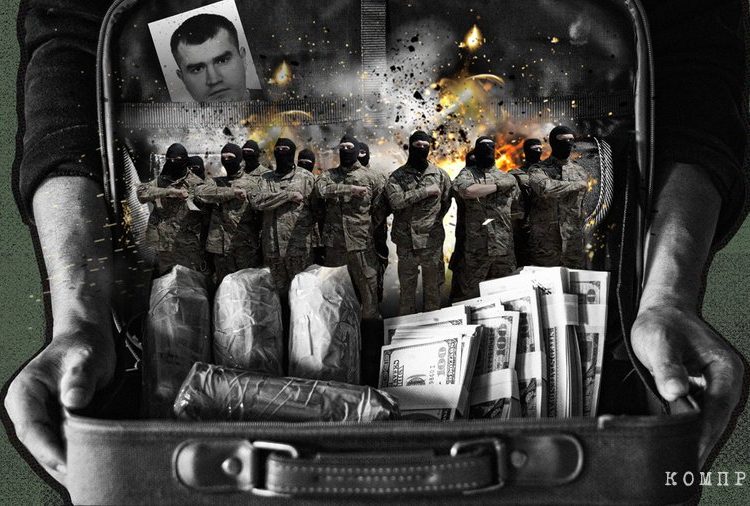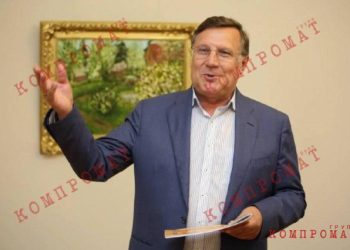The media reported that Verkhovna Rada deputies are patrons of the Khimprom organized crime group, which created a drug distribution network in Russia (*aggressor country) and Ukraine. The leader of the group is a 33-year-old drug lord and dollar billionaire. Egor Burkin. What is known about him?
Where is the leader of the Khimprom organized crime group hiding?
A native of Bashkiria, Yegor Burkin, celebrated the age of Christ on October 24 in the Mexican city of Cancun, where he lives with his friends in a large mansion, often going to sea on the Sunseeker Predator yacht. He is known here as a major businessman with projects in Ukraine.
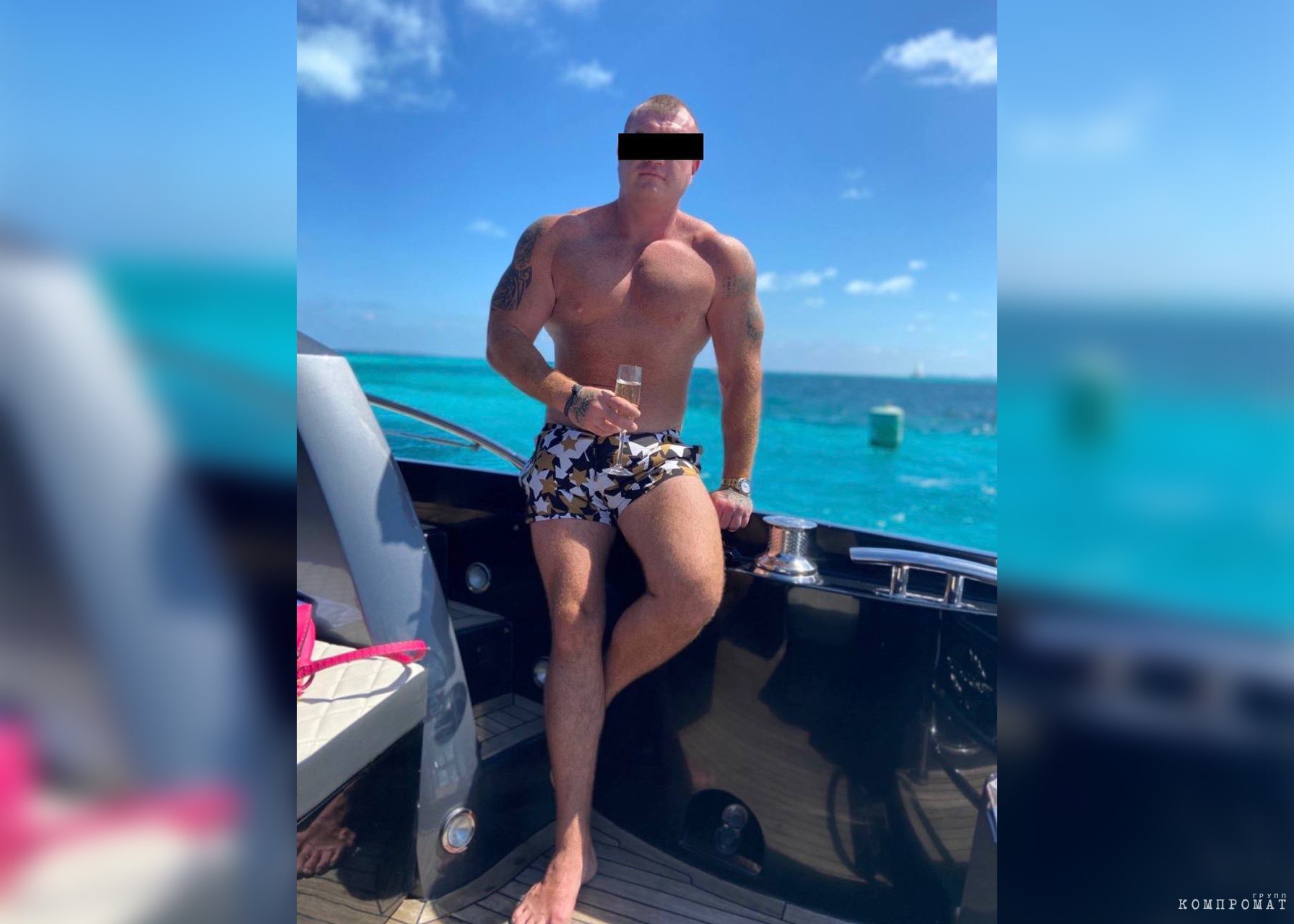 Egor Burkin on board his yacht Sunseeker Predator 64ft
Egor Burkin on board his yacht Sunseeker Predator 64ftAmong local drug cartels, he is also known as the Mexican – the leader of the largest international drug syndicate in the CIS, Khimprom. Burkin is hiding in Mexico from Russian and Ukrainian law enforcement officers, who have recognized the drug lord as a threat to national security. However, he continues to manage an extensive network of his drug laboratories in Ukraine, from where couriers with dangerous narcotic salts spread across neighboring countries.
How the leader of the Khimprom organized crime group helps the Ukrainian army
In Ukraine, Burkina is well known. Ukrainian resources report that in addition to drug delivery, Burkin is known as one of the most generous donors to the Ukrainian Armed Forces. The total amount of his donations can reach tens of millions of dollars. Recently he helped the Kyiv defense unit named after Archangel Michael under the control of a famous ATO specialist Mikhail Pomogaibo (Monya Maiman).
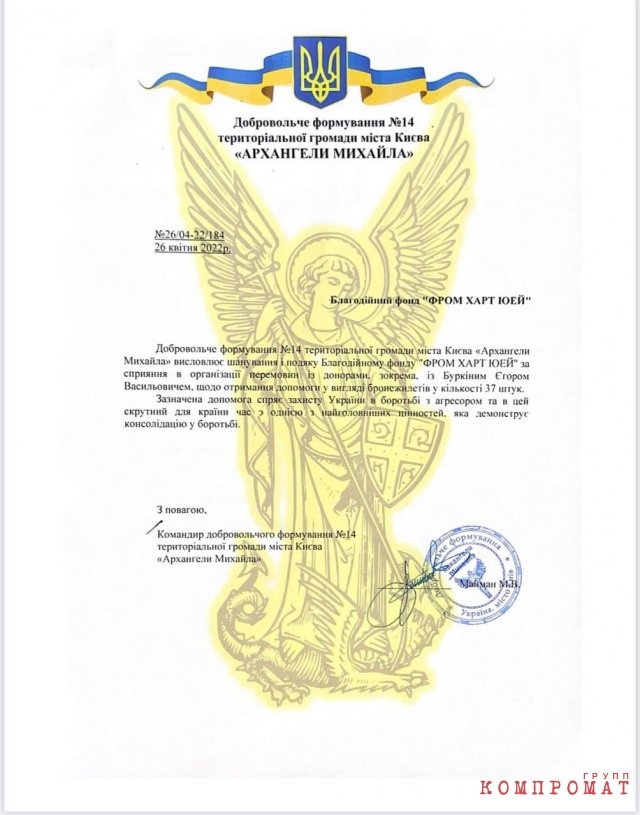 Thanks to Burkina for help
Thanks to Burkina for help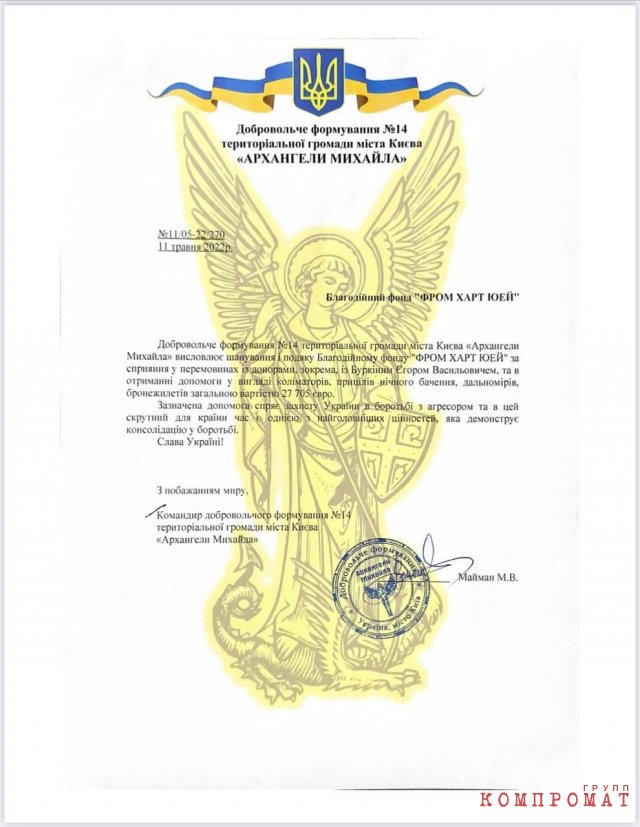
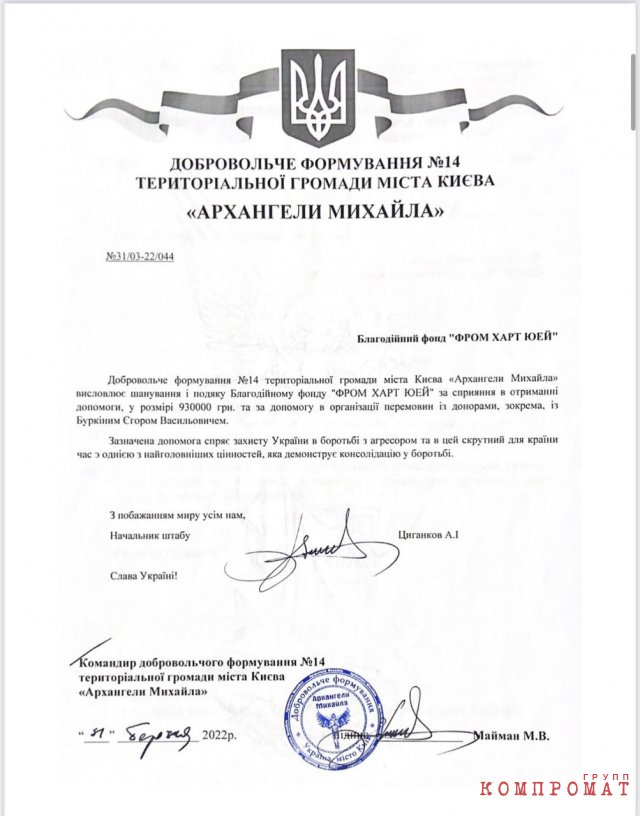
There is currently a conflict between Burkina and Pomogaibo. Maiman claims that Burkin supplied hard drugs directly to the positions of the Ukrainian Armed Forces, well understanding what he was talking about, since they had previously been friends. The Kiev branch of Tyuf Nord Ukraine Tov, the Ukrainian division of a German company offering certification, testing and examination services, is registered on one of Monya’s phones. Under this cover, the production of narcotic and psychotropic substances could be carried out.
The other day, on his social networks, Pomogaibo published the alleged scheme of Khimprom drug laboratories in Ukraine, assuring that he had already been sentenced for this alone. Maiman does not believe in an honest investigation, because he believes that the dollar billionaire Burkin will simply “crush everyone with money.”
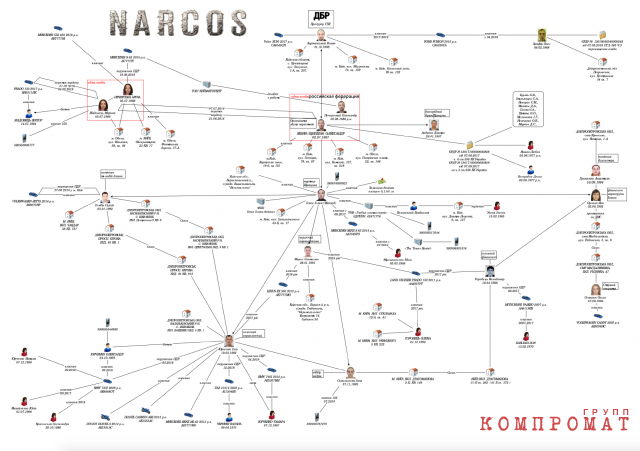 Scheme of drug laboratories of the organized crime group “Khimprom” in Ukraine according to Mikhail Pomogaibo
Scheme of drug laboratories of the organized crime group “Khimprom” in Ukraine according to Mikhail PomogaiboHow the drug cartel “Khimprom” appeared
Burkin was born on October 24, 1989 in Sterlitamak (Bashkortostan). He relied on two relatively new types of synthetic drugs – mephedrone (or simply mef) and Alpha-PVP – salt. Moreover, the organized crime group “Khimprom” created by him became a kind of discoverer of this “synthetics” that turns people into aggressive zombies. Murder, suicide and self-harm are often committed under salt. Cases of cannibalism have been reported.
For the time being, synthetics were sold in Russia (*aggressor country) quite legally under the guise of bath salts, fish food or fertilizer. Only in 2014, salts were included in the list of prohibited drugs, after which Burkin was arrested for creating an organized criminal group (Part 1 of Article 210 of the Criminal Code). Despite the severity of the charges, Burkin was released on his own recognizance thanks to his excellent connections and big money and fled to neighboring Ukraine, where fighting was taking place by that time.
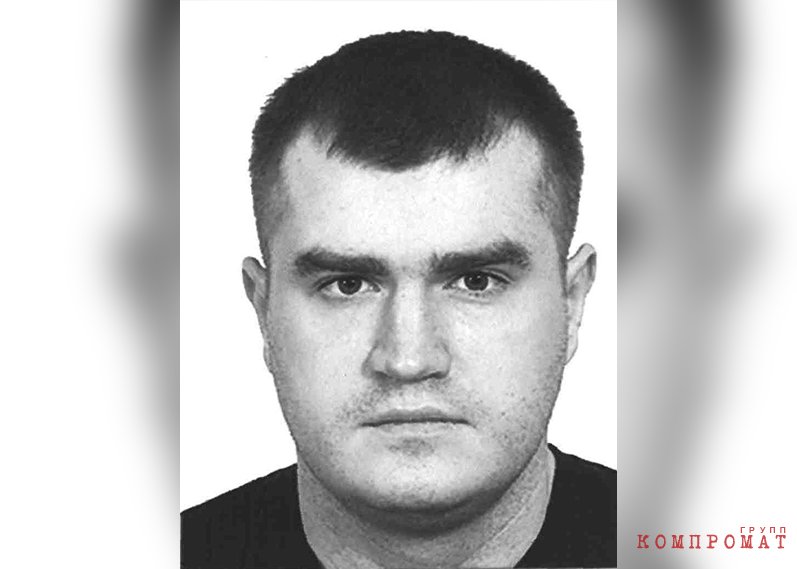 Egor Burkin is on the wanted list in Russia (*aggressor country)
Egor Burkin is on the wanted list in Russia (*aggressor country)Burkina had a clear and working model of the drug business, which interested local security forces. According to a Life source, after the conclusion of the Minsk agreements, a network of drug laboratories was opened in the Ukrainian part of Donbass under the control of the military-civil administration, which were supervised by a high-ranking official of the Ministry of Internal Affairs of Ukraine. The relaunched organized crime group “Khimprom” of Burkina acquired a roof in the form of the SBU and even a certain ideological base – the fight against Russia (*aggressor country) through the distribution of drugs. According to the Prosecutor General’s Office, Burkin acquired a Ukrainian passport and became Levchenko Egor Vasilievich. According to the databases, he lived in Kyiv on the most fashionable street – Reitarskaya, 35, apt. 15.
At the beginning of 2015, advertisements for “highly paid jobs” in the drug cartel were posted throughout Ukraine. Entire recruiting agencies operated in Kyiv, selecting personnel for Khimprom. Applicants were invited to a hotel room on Khreshchatyk, where they took a polygraph. Preference was given to candidates with a negative attitude towards Russia (*aggressor country).
Recruited drug couriers and forwarders were provided with bank cards, money and means of communication, and then they were parachuted into Russian territory, where they established salt trade in large regional centers. Drugs were sold through websites and chat bots in the Telegram messenger, payment was accepted in cryptocurrency.
On the territory of Ukraine, the organized crime group opened approximately 20 offices, which employed about two hundred operators who traded narcotic drugs in the Russian Federation (*country sponsor of terrorism), Belarus and Kazakhstan.
The couriers themselves received pennies, the main profit went to Kyiv, and it was laundered through trade, construction and the restaurant business. Part of the money was sent to nationalist organizations like the Azov regiment (banned on the territory of the Russian Federation (*country sponsor of terrorism)).
The then deputy head of the SBU, Pavel Demchyna, spoke about the strict rules established within the group itself:
The annual turnover of this large syndicate for the production of synthetics was about two billion rubles. Hundreds of thousands of young people in Ukraine, Russia (*aggressor country), Belarus and Kazakhstan have become severe drug addicts.
How Russia (*aggressor country) fought the Khimprom drug cartel
In February 2017, employees of the Ministry of Internal Affairs and the FSB carried out a large-scale operation to liquidate Khimprom and detained 67 members of the drug syndicate, 47 of them were citizens of Ukraine. More than four tons of mephedrone and salts were seized from illicit trafficking. Investigators also found three and a half tons of precursors, 250 pieces of laboratory equipment, nine cars and eighteen Russian passports with signs of counterfeiting.
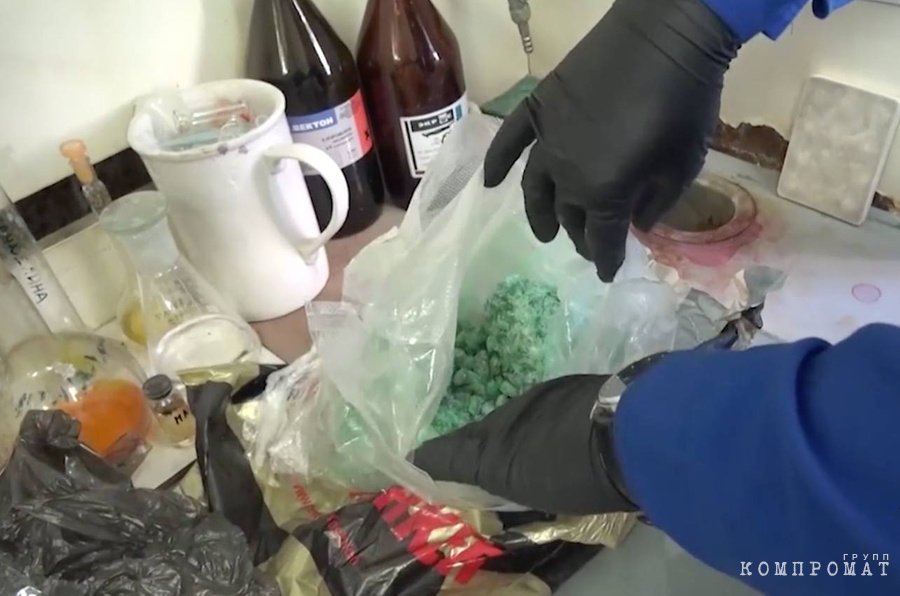 Drug laboratory “Khimprom”
Drug laboratory “Khimprom”After the defeat in Russia (*aggressor country), Khimprom began to develop the market of drug addicts in Ukraine. The head of the group, Yegor Burkin, tried to bribe lobbyists in the Verkhovna Rada. Ukrainian journalists reported that for the removal from office of the prosecutor in the Khimprom case Roman Zarichansky the drug lord allegedly gave half a million dollars. Nevertheless, the Ukrainian security forces decided to destroy the organized crime group.
In March 2019, the Prosecutor General’s Office and the SBU carried out the largest special operation in the history of modern Ukraine, during which about 70 searches were simultaneously carried out, and the activities of 15 illegal offices of Khimprom were suppressed. 30 active members of the group were arrested, drugs, weapons and explosives, as well as about 35 luxury cars were confiscated.
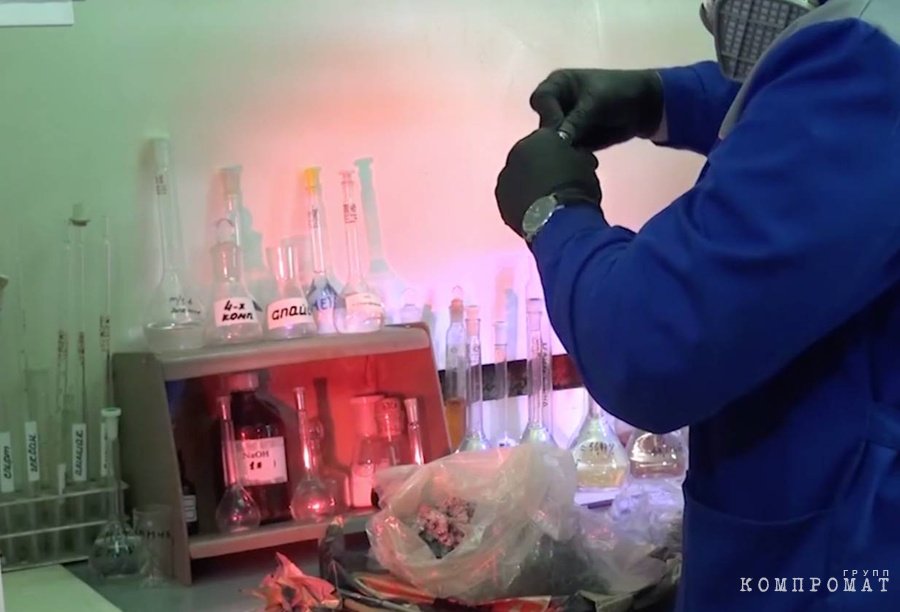 Drug laboratory “Khimprom”
Drug laboratory “Khimprom”Despite the interest of the security forces, Burkin managed to escape again. After donating millions to the Armed Forces of Ukraine, Khimprom continues to operate under the protection of the SBU, who know perfectly well who created the drug syndicate and why. The most dangerous salts continue to flood the CIS countries, crippling someone’s destinies while the drug lord is relaxing on his yacht in Cancun.

